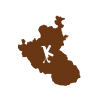Kodava Thakk Padipo – Session 1
The first session of the online teaching program ‘Kodava Thakk Padipo‘.
Contents
Learning Notes for Session-1
Hello Everyone!
Let us learn the Kodava Language
nanga kodava thakk pariyana(speak)- Padikana(learn)
Hope you all are fine?
ninga ellaru chaayith uLLiira?
Recap:
nanga(we or let us)
ninga(You)
ellaru (all)
pariyana( speak)
padikana( learn)
Days( dhina)
Week(waara)
Good (chaayi)
aache (Day)
Let us learn Numbers- one to Ten
Numbers ( anke??)
One- ondh
*/dh/ is nice and soft like the sound in ‘the’ or ‘their’
Two- dhand
*/d/ is hard and sharp with the tongue curled backwards.
Three- muundh
Four- naal
*/aa/ is a nice and open sound — the same sound you make when you have to open your mouth at the dentist ‘aaaahhhhh’!
Five- anji
Six- aar
Seven – êêL
*this has a long vowel sound /êê/ that some of you might not be familiar with. Think of it as the same sound in ‘shirt’, ‘her’, ‘burn’ but without the /r/ sound at the end.
Eight- êtt
*this has a short /ê/ sound as in ‘about’ or ‘assume’.
Nine- woyimbadh
Ten- pathth
Let us now learn to identify few Animals
Animals( praaNi)
Cow- payyu
Horse- kudhure
Sheep-kori
Hen- koaLi
*/oa/ is pronounced like the English ‘coal’ or ‘oar’
*/L/ is pronounced similar to the normal /l/ sound but instead with the tongue curled backwards. (See the diagram located below under “Pronunciation Notes”)
Rabbit- mona
Donkey- kaththe
*Remember that the /th/ sound is doubled here. This is important! For example:
kaththe means ‘donkey’ whereas
kathe means ‘story’.
Goat – aad
Dog- naayi
Duck- baathkoaLi
Cat- Puunynye
Let us learn the days of the week
nanga vaara thiira pedha padikana
Monday- thingLaache
Tuesday- chowwaache
Wednesday- padhnaache
Thursday- beaLache
Friday- boLLiyaache
Saturday- cheniaache
Sunday- naarache
Pronunciation Notes:
Retroflex sounds:
There might be some sounds that are unfamiliar to you. Let’s take a look at some of them:
/L/ as in koaLi
/N/ as in praaNi,
/d/ as in aad, dhand
/t/ as in aat,

All of the above consonants are pronounced by bending the tongue backward as we see in the diagram below. Can we all try creating the sounds together?
(Image taken from Wikipedia)


Comments
Leave a comment!Login for Post Comment
Last posts